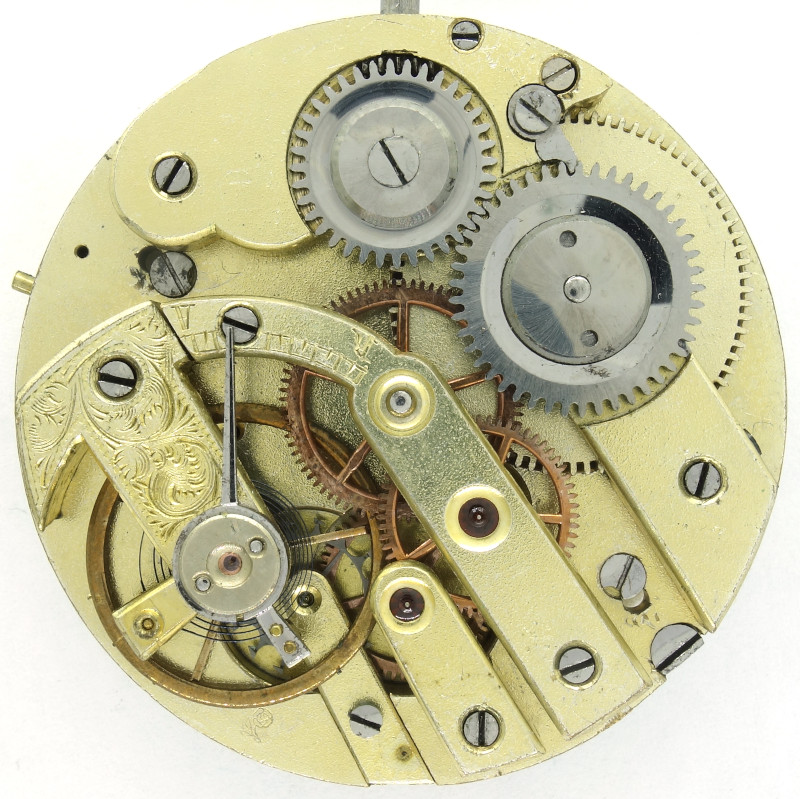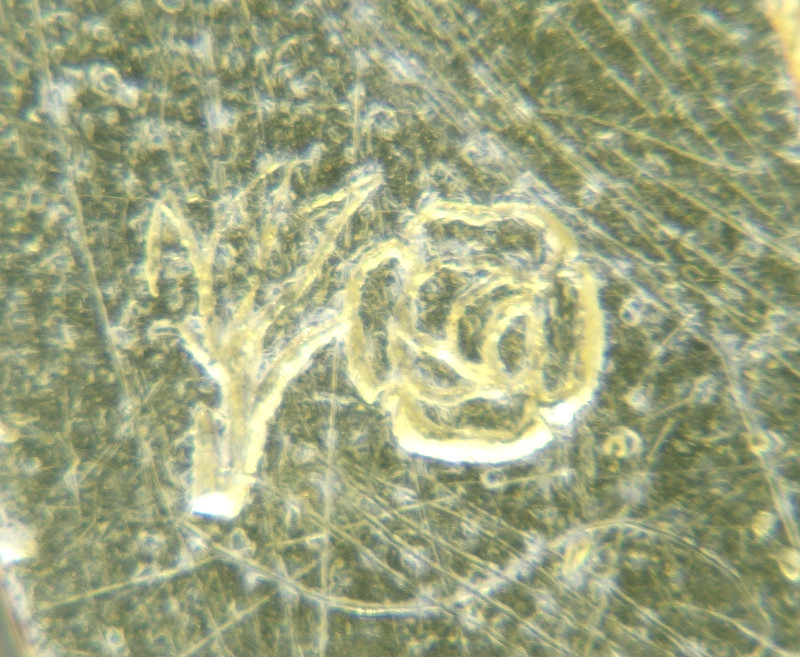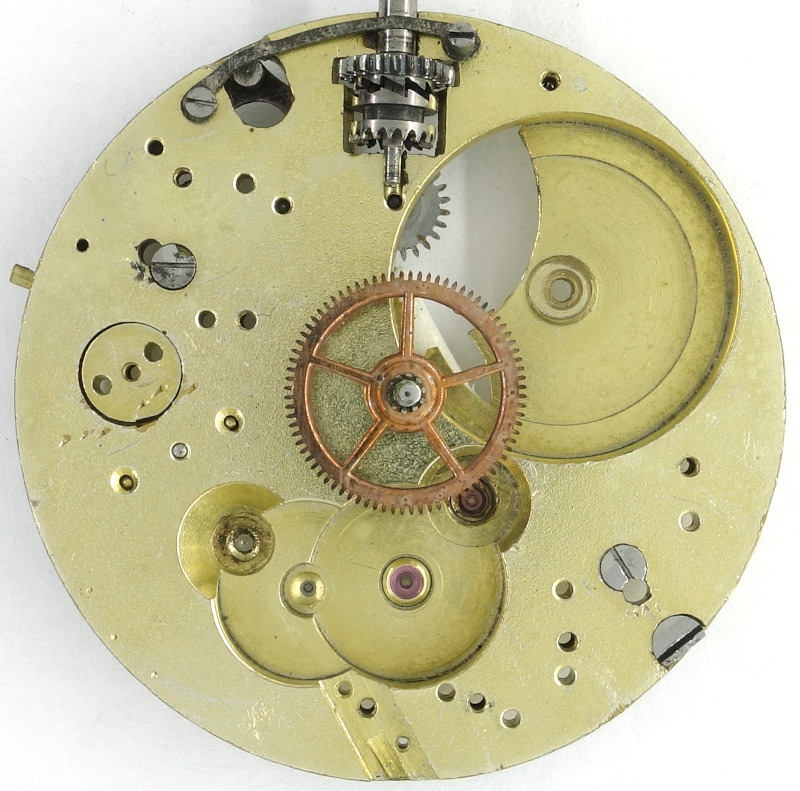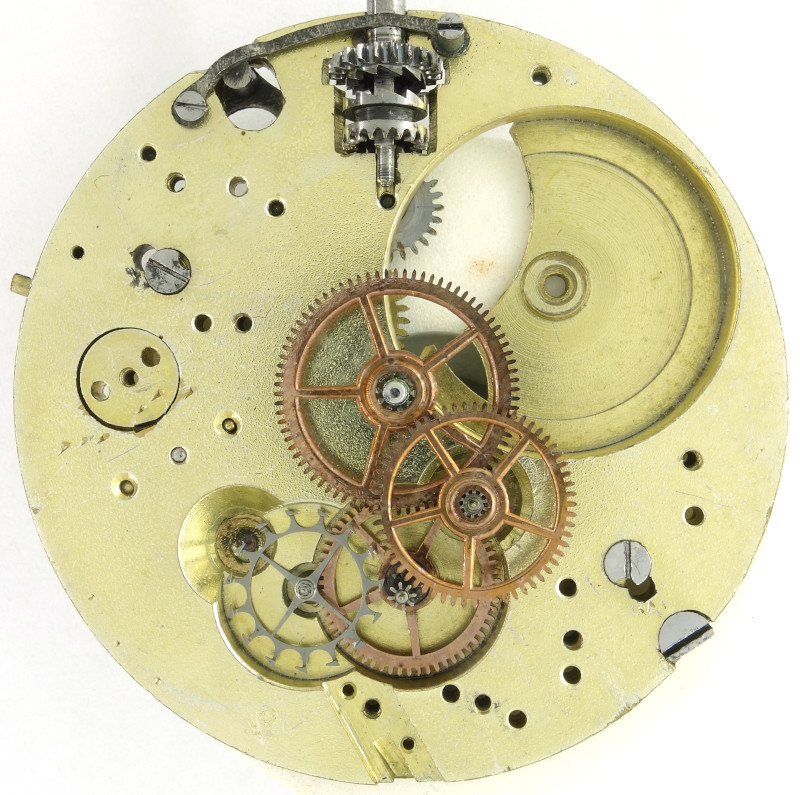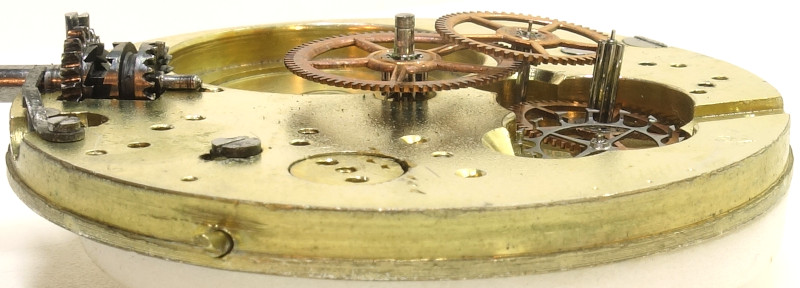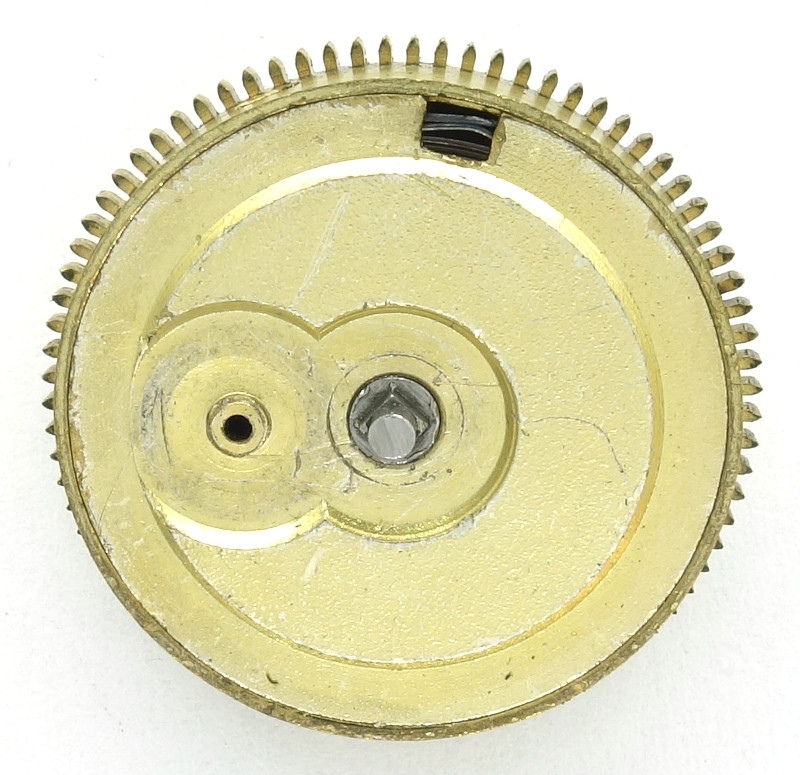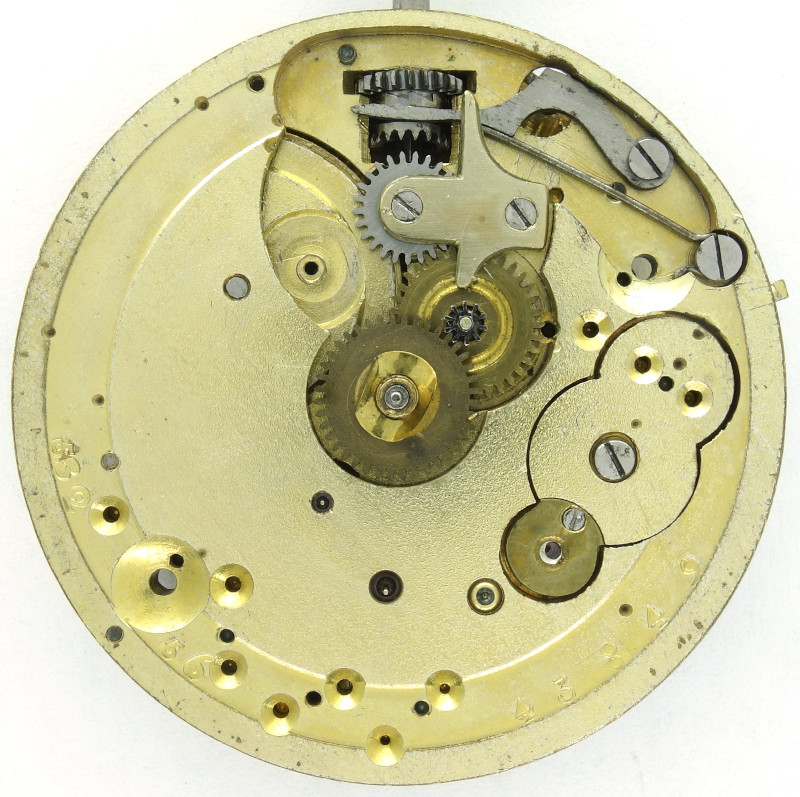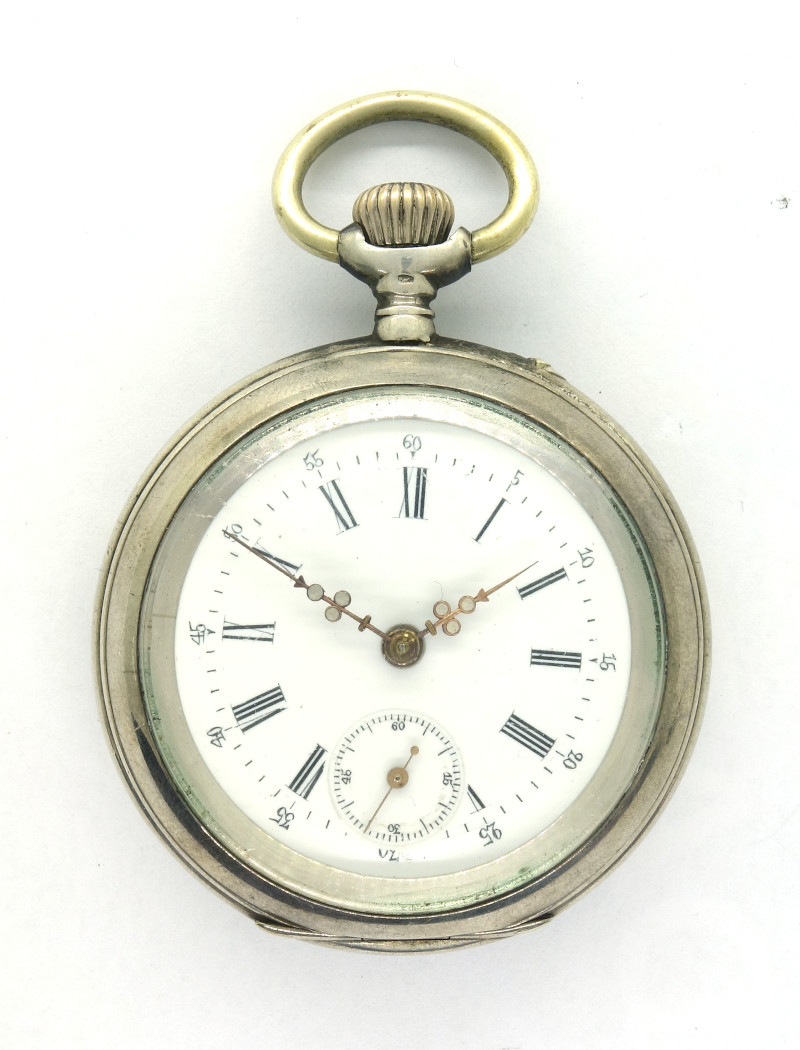Description
As so often with cylinder movement, this 18 ligne movement from a pocket watch cannot be really identified.
With its round edge on the barrel bridge, an FHF origin seems quite possible.
Unfortunately, the “rose” hallmark doesn’t help either, although it is pretty clear and unique.
The cylinder movement is of pretty good quality. You can see it on the bearings, which contain all rubies, where neccessary. And the movement can be fully controlled (wound and set) by the crown and a pin next to it.
The gear train is the standard one for movements with cylinder escapement:
The mainspring barrel directly drives the center minute wheel, followed by
third wheel, center seconds wheel at position 6 o’clock and finally the
steel cylinder wheel.
The balance is a three leg anular balance, which is of course not yet shock protected. It beats slowly with 18000 A/h and can be adjusted with the help of a pretty long regulator arm, whose scale is here not on the (decorated) balance cock, but on the minute wheel bridge.
Originally, the mainspring barrel even had a Maltese mark, a device that ensures that the spring is only tensioned within a limited range, thus transferring its power to the gear train as evenly as possible over the entire usable time.
This was intended to achieve greater accuracy, but for cylinder movements that operate with friction (the teeth of the cylinder wheel rub against the steel cylinder of the balance axis), this is more of an academic use.
Since Maltese marks are somewhat problematic, they were often removed during overhauls, as was the case in the present example.
On the dial side, you see at position 1 o’clock the lever for switching between winding and setting the hands via the crown.
A word about the balance bearing at the 4:30 position: The capstone is not set here, but lies loosely beneath the screwed plate.
In the lab
Timegrapher result
Cylinder movements usually show a poor performance on the timegrapher, and so does the tested specimen, too.| horizontal positions | |||
|---|---|---|---|
| dial up | +125 s/d | ||
| dial down | +215 s/d | ||
| vertical positions | |||
| crown right (12 up) | +214 s/d | ||
| crown up (3 up) | +137 s/d | ||
| crown left (6 up) | +-0 s/d | ||
| crown down (9 up) | +171 s/d | ||
Technical data
| Manufacturer: | unknown |
| Caliber: | FHF? |
| Size: | 18''' (measured: 40,2mm) |
| Number of jewels: | 10 |
| Escapement: | Cylinder |
| Balance types: |
monometallic anular balance (three legs) |
| Shock protection(s): |
none |
| Balance bearing / direction hairspring: | Counterclockwise |
| Moveable stud: | no |
| Adjust mechanism: | Long regulator arm |
| Construction: |
|
| Construction type: | solid construction |
| Winding mechanism: | yoke winding system |
| Setting lever spring: | 1 hole(s) |
| Attachment of setting lever: | screwed |
| Features: |
|
| Inventory number: | 24004 |
